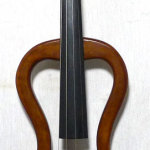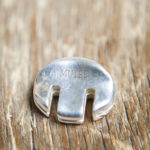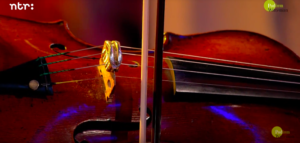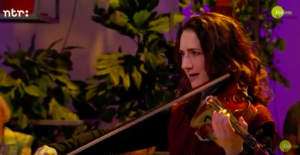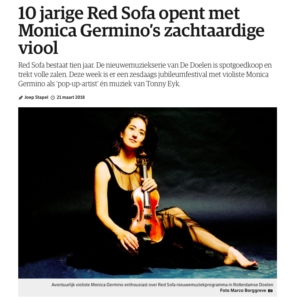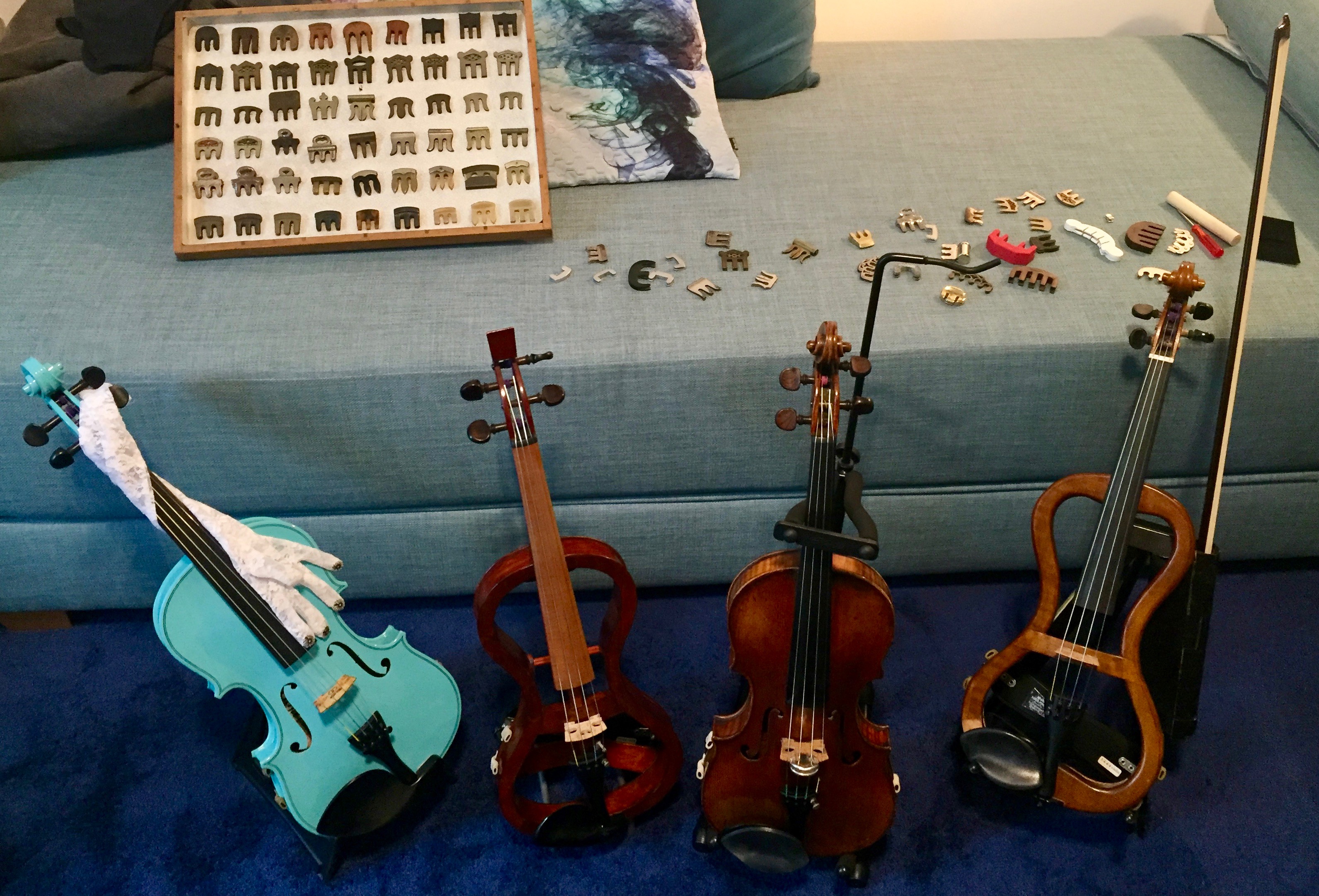
my companions these days...
from left to right: mr. blue (with tapping glove), a ca. 1970 frame violin, a J. B. Ceruti violin (1802), a ca. 1870 frame violin
lurking in the background: framed vintage mutes. Special thanks to Stam Vioolbouw of Utrecht
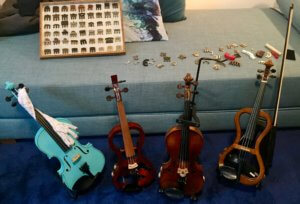
& the ingenious whisperviolin, with adjustable decibel levels
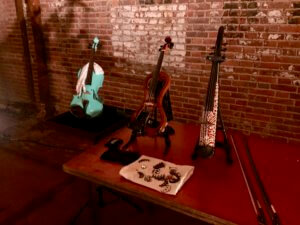


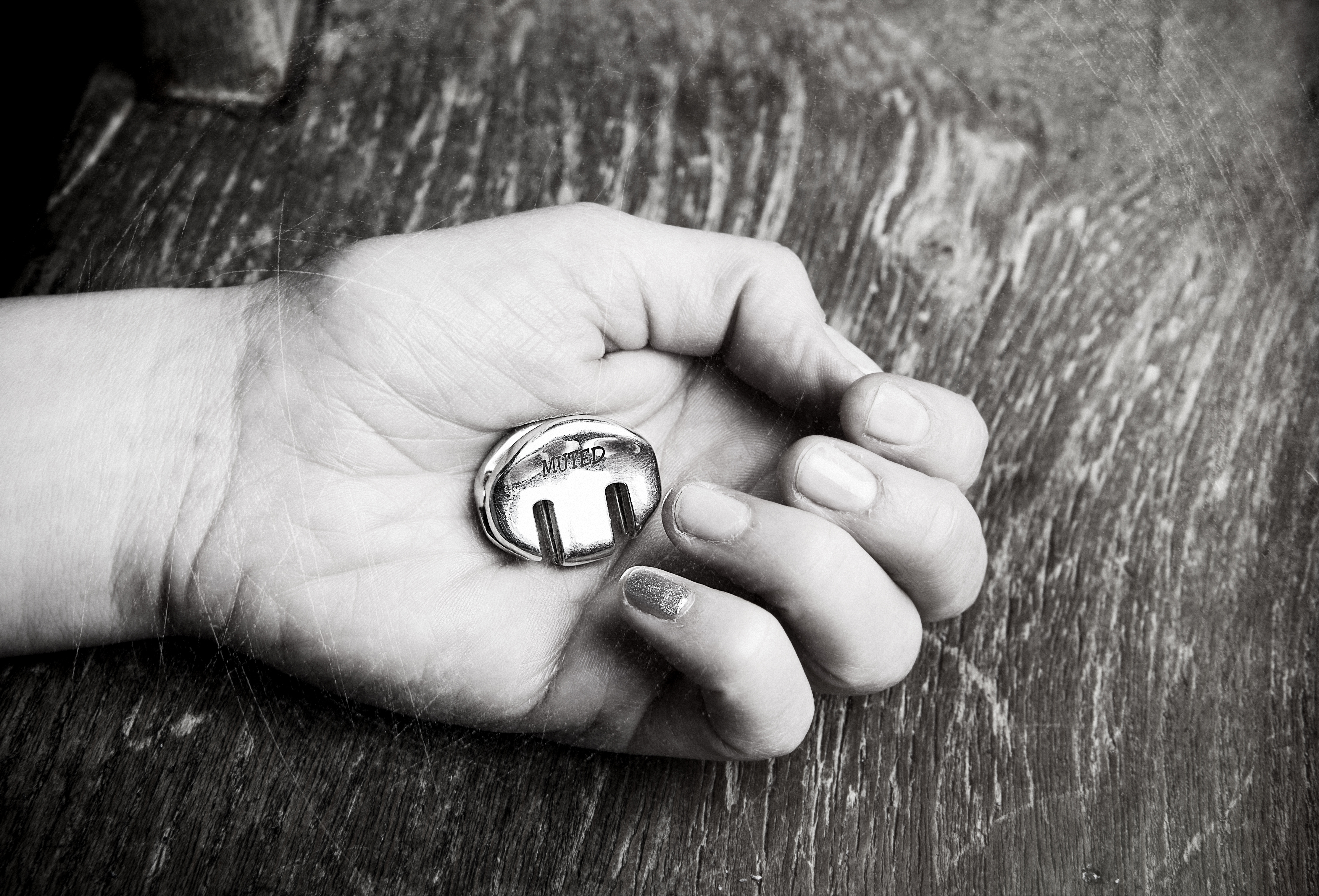
Decibels & Instruments & Mutes: the backstory
The specialists were unanimous: my ears are highly sensitive to sound. ‘Geluidsgevoelig,’ in Dutch. It sounded almost positive to me, ‘sensitive to sound.’ It’s also not uncommon. But a high sensitivity to sound means that my ears are more prone to damage. A person standing next to me could be exposed to exactly the same sounds, yet not be affected. The advice was clear: I needed to protect my hearing by significantly reducing my exposure to high decibel (dB) levels.
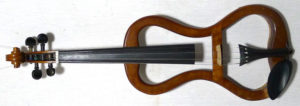

pictured here: the frame violin, also known as a mute violin, ca. 1870. It has a beautiful, intimate, overtone-rich sound. Surprisingly little is known about these striking instruments. One resource is the National Music Museum at the University of South Dakota, whose collection houses what could be this frame violin's sister...
MUTED
Cue the new music community: resourceful, supportive and stubborn composers and colleagues who lifted me up and pulled me along this fascinating journey. Ups and downs and the unexpected began to feel like the status quo. Michael Gordon's response to what was drastic news to me —having to protect my hearing by stopping or adapting how I played the violin — was one of optimism and curiosity. I'll never forget his words: “I’m going to write you a piece so soft, I don’t care if no one can hear it.” Michael, David Lang, and Julia Wolfe decided to join forces to create MUTED, “the quietest violin piece ever written.” The three later invited Louis Andriessen to join in the experiment, fulfilling a long-held wish to collaborate.
Watch musical excerpt by Louis Andriessen here (Podium Witteman, live television broadcast)
There is an enormously talented and resourceful pool of people involved, including stage and light designer Floriaan Ganzevoort, executive producer Neil Wallace & De Doelen, numerous mute creators, filmmakers, audiologists, producers, commissioners, as well as a swath of venues and festivals. The list* is long and heartwarming.
Special thanks to luthier Bas Maas and designer Marcel Wanders, who created an entirely new, lower-decibel instrument, a ‘whisperviolin,’ inspired by and loosely modeled on the 17th-century ‘pochette’ violin, but made to explore the world of quieter sounds. Besides unmatched creativity and unparalleled skill, both bring a sense of adventure and a palpable excitement to the process.
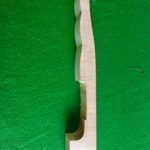
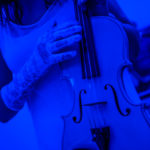
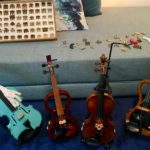
It’s new territory for me, there’s an uncharted development process ahead, and a completely new sound world to figure out. My work has always been composer driven, and I am extremely grateful to and moved by the active role composers and colleagues are taking in this enforced, bewildering, and somehow increasingly exciting development in my creative path as a musician.
The mutes in MUTED
Central to Monica Germino’s work is her unusual family of instruments, as well as her ever-expanding collection of mutes. Germino’s ongoing search has resulted in over 400 vintage, modern, and newly commissioned mutes. A mute (a.k.a. sourdine, sordino, demper) can alter the sound of the violin in countless ways. From Canada to Spain, mute-makers are experimenting with new designs and all kinds of materials – leather, metal, cork, magnets, plexiglass, bone, rubber, paper, textiles, the list goes on. Special thanks to Stam Vioolbouw for their marvelous donation to the collection.

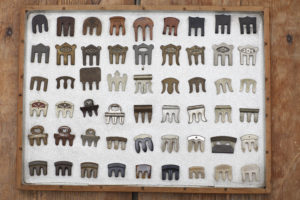
The instruments
- A (muted) J. B. Ceruti violin from Cremona (1802) on permanent loan from the Elise Mathilde Foundation
- A rare frame violin, also known as a mute violin, with a delicate, surprisingly overtone-rich sound (ca. 1870)
- A custom-made Violectra electric violin (2007)
- The ingenious whisperviolin (2019), by Bas Maas and Marcel Wanders
- A ‘whisperbow,’ made of carbon fibre, produces a wispy, delicate sound
The whisperviolin (2019)
To add to the instrumentarium, luthier Bas Maas and designer Marcel Wanders created an entirely new, lower-decibel instrument, a ‘whisperviolin,’ inspired by and loosely modeled on the 17th-century ‘pochette’ violin, but created to explore the world of quieter sounds. When Wanders took on this challenge, he spoke about decibels and sound and his fascination with “designing a violin for Monica, and how this could ultimately also help other violinists.” Marcel Wanders played the violin for 6 years and reveres its history, shape, and form. Bas Maas is on a quest for ways that unconventional ideas could possibly work. Besides unmatched creativity and unparalleled skill, both bring a sense of adventure and a palpable excitement to the process.
Marcel Wanders: “The hope also is that this new instrument will end up helping other violinists as well. Monica is not the only one going through this.”
I wholeheartedly agree. As interesting as this whole journey is, I hope going down this path can help other musicians. On that note...
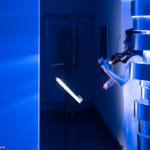
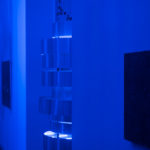
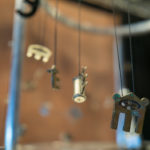

Light design by Floriaan Ganzevoort
*Cast of credits, MUTED:
Oranjewoud Festival, Oranjewoud
New York Philharmonic Orchestra, New York
Music on Main, Vancouver
Huddersfield Contemporary Music Festival
Wonderfeel Festival
Korzo Theater, Den Haag
Muziekgebouw aan ‘t IJ, Amsterdam
November Music, Den Bosch
MassMoCA, Massachusetts, USA
Kenny Savelson, Bang on a Can All-Stars
Phillipa Thompson, Bang on a Can Summer Festival
Vera Kuiper, Dutch Consulate, New York
Neil Wallace, Programme Director, de Doelen
Bas Maas, luthier
Marcel Wanders, designer
Niek Versfeld and Jaap Peter Kronemeijer, Audiologisch Centrum Hilversum
Stijn Hoogeboom, Oorwerk, Hilversum
Bas Andriessen, filmmaker
MUTED in the press
New York Times reviews MUTED
The Wall Street Journal Philharmonic Dials Down Music to a ‘Whisper’
New York Times: MUTED on the top of the list
6 Classical Music Concerts to See in N.Y.C. This Weekend
The Georgia Straight, Vancouver CA: Diagnosis sends violin star Monica Germino in search of softer sounds at PuSh fest
De Volkskrant: Violiste Monica Germino kan door speciaal voor haar geschreven zachte stukkenweer spelen
NRC Handelsblad: 10 jarige Red Sofa opent met Monica Germino’s zachtaardige viool
The Washington Times
Oberon’s Grove
Broadwayworld.com announcements & here
New York Philharmonic press release
VIDEO
Music on Main about MUTED
Podium Witteman, live: fragment van MUTED
Full broadcast: Podium Witteman
The New York Times -Anthony Tommasini

The violinist Monica Germino in "Muted," presented by the Philharmonic at National Sawdust in Brooklyn.
"... the impressive and courageous violinist Monica Germino gave the American premiere of “Muted,” a 40-minute, musical-theatrical work written for her by four composers: Michael Gordon, David Lang, Julia Wolfe and Louis Andriessen.
Ms. Germino was a champion of contemporary music, including experimental works with percussion and electronics, when, a few years ago, she was diagnosed with a hearing condition that rendered her extremely sensitive to sound. She must avoid exposure to high volume of any kind.
“Muted” was the response of four composer colleagues. The piece involves very soft sounds played on an array of violins, from traditional to experimental, and used various standard mutes (brass pieces fitted on the bridge of the instrument to muffle sound). During parts of ”Muted,” Ms. Germino also sang or spoke fanciful texts by Don Marquis and moved around a central, light-projecting circular tower of aluminum rings (designed by Floriaan Ganzevoort).
While wistful, the music shifts through moods and styles that alternately suggest tender folk songs, gently swaying dances, bursts of hushed busyness, bluesy melodies, even twangy hints of hoedown. “Muted” may be the quietest piece ever written for violin, but it was riveting in this intimately powerful performance."
read more
The Wall Street Journal - A violinist with a sensitivity to sound will perform ‘Muted,’ a special, quieter piece for audiences in Brooklyn
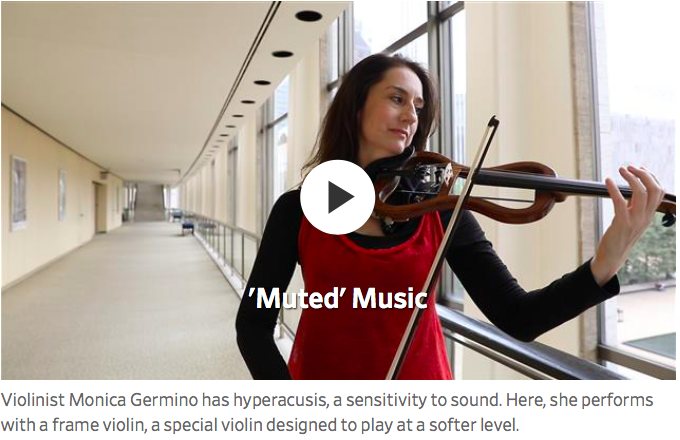
Violinist Monica Germino performs on a frame violin, which is quieter than a traditional violin, at New York’s Lincoln Center. A caveat: the audio in the video segment is louder than in performance
"The composers involved explain that “Muted” isn’t necessarily difficult for audiences to hear. [Michael] Gordon said concertgoers just need to pay closer attention. He likens it to stepping into a dimly lit room and adjusting your eyes until you can see clearly once again..." The Wall Street Journal
Live TV broadcast Podium Witteman -the MUTED segment starts at 6'55" (in Dutch). Music: 19'30"
Excerpt by Louis Andriessen here
"The American-Dutch violinist Monica Germino, known for her electronically amplified performances of music by contemporary composers, is given the worst conceivable news three years ago: she has to stop making music or take drastic measures to protect her hearing." ...READ MORE
"...As the pop-up artist, Monica Germino will decide what she will actually play in the moment. It will certainly be soft, because a few years ago Germino was diagnosed as 'sensitive to sound,' which means that her ears are more prone to damage [from high decibel levels]. She had to say goodbye to the high-octane soundtracks and louder works for electric violin, giving up many pieces she had often performed.
She is now "more curious than sad," says Germino. Playing quietly opens up a whole new dimension; and apart from a reflection on silence and listening it can also be "an antidote to the relentless noise of our world." She has amassed a huge collection of mutes (sourdines) and plays a rare 'frame violin' from ca. 1870, an instrument without a sound box which therefore plays at a very low volume. Germino: "Neil [Wallace] wants me to play the frame violin in the Main Hall without any amplification; for me that's a thrill, an adventure." Wallace: "You will hear a pin drop.”
Spring Loaded Festival: 10 years of Red Sofa. De Doelen Rotterdam.
photos: Anne Reinke

